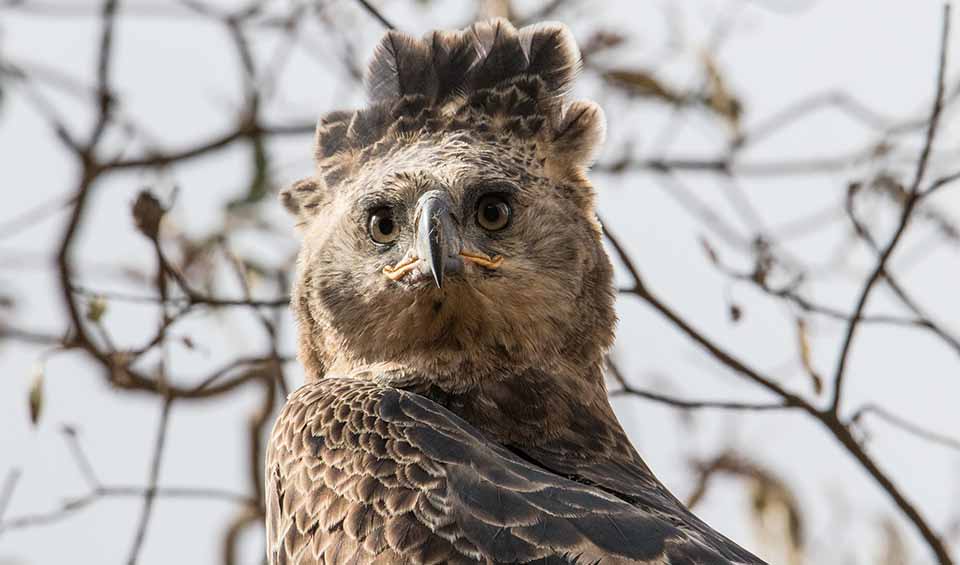One of the most powerful and striking birds of prey in the world. Found in sub-Saharan Africa’s forests and woodlands, this eagle is known for its bold appearance, fierce hunting skills, and remarkable strength. It gets its name from the elegant crest of feathers on its head, which it raises when alert or excited — giving it a kind of regal, “crowned” look. With piercing yellow eyes, a sharp, hooked beak, and massive talons, the crowned eagle looks every bit like the ruler of the treetops.
This eagle is not just about looks — it’s incredibly strong and is considered Africa’s most powerful raptor when it comes to the size of prey it can take down. Unlike other eagles that go after fish or small birds, the crowned eagle often targets mammals like monkeys, small antelope, and large rodents. Some of its prey can be heavier than the eagle itself! It hunts with a combination of stealth and surprise, soaring silently through the trees and striking with lightning speed. Once it locks on to its target, those huge talons do the rest — in fact, they’re strong enough to crush bone.
Crowned eagles usually nest high in tall forest trees, building huge nests out of sticks that they reuse and add to every year — some can be over 2 meters (7 feet) wide! They mate for life, and both the male and female take care of their single chick, which stays in the nest for several months before flying off on its own. The chick grows slowly and needs lots of care, so the parents put a lot of energy into raising it. These eagles aren’t seen often because they live in dense forests, but their loud, haunting call — a series of sharp whistles — often gives away their presence.
Distribution
 Angola
Angola Benin
Benin Botswana
Botswana Burundi
Burundi Cameroon
Cameroon Central Af. Rep.
Central Af. Rep. Congo-Brazzaville
Congo-Brazzaville Côte D’ivoire
Côte D’ivoire DR Congo (Kinshasa)
DR Congo (Kinshasa) Equatorial Guinea
Equatorial Guinea Eswatini
Eswatini Ethiopia
Ethiopia Gabon
Gabon Ghana
Ghana Guinea-Bissau
Guinea-Bissau Guinea
Guinea Kenya
Kenya Liberia
Liberia Malawi
Malawi Mozambique
Mozambique Nigeria
Nigeria Rwanda
Rwanda Senegal
Senegal Sierra Leone
Sierra Leone South Africa
South Africa South Sudan
South Sudan Sudan
Sudan Tanzania
Tanzania Togo
Togo Uganda
Uganda Zambia
Zambia Zimbabwe
ZimbabweAnything we've missed?
Help us improve this page by suggesting edits. Glory never dies!
Suggest an editGet to know me
Terrestrial / Aquatic
Altricial / Precocial
Polygamous / Monogamous
Dimorphic (size) / Monomorphic
Active: Diurnal / Nocturnal
Social behavior: Solitary / Pack / Herd
Diet: Carnivore / Herbivore / Omnivore / Piscivorous / Insectivore
Migratory: Yes / No
Domesticated: Yes / No
Dangerous: Yes / No




